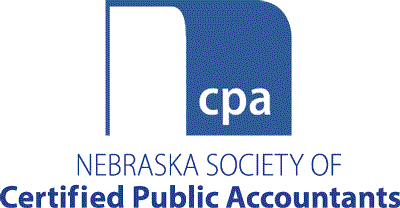The purpose of an audit is to provide financial users with an opinion by the auditor on whether the financial statements are presented fairly, in all material respects, in accordance with an applicable financial reporting framework. It only takes one material misstatement for a set of financial statements to be materially misstated and, thus, if not ultimately adjusted by management, result in a modified audit opinion. The “Accounting Principles Rule,” as cited in paragraph 1.14 of the AICPA Guide, State and Local Governments (AICPA SLG Guide), prohibits an auditor from expressing an unmodified opinion if the financial statements contain a material U.S. generally accepted accounting principles (U.S. GAAP) departure. Paragraph A7 of AU-C 705, Modifications to the Opinion in the Independent Auditor’s Report, indicates that material misstatements of the financial statements may arise when the disclosures in the financial statements are not presented in accordance with the applicable financial reporting framework. Also, paragraph A1 of AU-C 450, Evaluation of Misstatements Identified During the Audit, indicates that misstatements may result from:
- Inadequate or incomplete disclosures and omission of those disclosures required to meet disclosure objectives of certain financial reporting frameworks as applicable.
- The omission of a disclosure necessary for the financial statements to achieve fair presentation beyond disclosures specifically required by the framework.
Our experience confirms that, not uncommonly, material misstatements appear in SLG and not-for-profit (NFP) financial statement notes (disclosures), with no modification of the auditor’s opinion. As noted in our report, More Than Just the Audit Opinion: SAS 134 Significant Changes Unrelated to the Auditor’s Report, disclosure and presentation within financial statements are not held to the same level of rigor as recognition and measurement in the financial statements. In examining the Peer Review database of Matters for Further Consideration (MFCs), we noted numerous recent MFCs related to financial statement disclosures.
Examples of Matters for Further Consideration
Disclosures were omitted for the operating lease and capital stock including the number of shares issued, authorized, and outstanding.
The required disclosures were omitted from the financial statements. Standard subsequent events disclosures are missing.
The total of long-term debt maturities presented in the financial statement disclosures does not tie to the face of the financial statements.
The required disclosures were omitted from the financial statements—for example, missing disclosures on variable interest entities (VIEs); missing disclosures on a multiemployer pension plan; missing disclosure of five-year minimum lease payments adjusted to present value; and capital lease and operating lease five-year minimum lease payments co-mingled together.
We remind auditors of their responsibility to dedicate appropriate attention to assertions about presentation and disclosure in financial statements, such as whether all disclosures that should have been included in the financial statements have been included (completeness) and whether disclosures are clearly expressed (understandability). Auditors should obtain sufficient and appropriate audit evidence related to the disclosures made in the notes to the financial statements.
Required Disclosures and Materiality
Yes, omissions are misstatements; however, immaterial disclosures are not required. A “required disclosure” should be understood as shorthand for “required for fair presentation in all material respects in accordance with the applicable financial reporting framework.” Further, paragraph 67 of GASB Statement No. 38, Certain Financial Statement Note Disclosures, and paragraph 6 of National Council on Governmental Accounting (NCGA) Interpretation No. 6, Recognition and Measurement of Certain Liabilities and Expenditures in Governmental Fund Financial Statements, indicate that the notes to the financial statements should not be cluttered with unnecessary and immaterial disclosures. Attendant circumstances and materiality must be considered in assessing the propriety of the notes to the financial statements. Statement on Auditing Standards (SAS) 138 provides guidance on evaluating materiality in the GAAS audit context.
Concept of Materiality and SAS 138
SAS 138, Amendments to the Description of the Concept of Materiality, aligns the concept of materiality in AICPA professional standards with the descriptions used in the U.S. judicial system, Public Company Accounting Oversight Board (PCAOB), Securities and Exchange Commission (SEC), and Financial Accounting Standards Board (FASB) standards. The following describes the difference between the legacy guidance and revised description of materiality (emphasis added):
Legacy Description
- Misstatements, including omissions, are considered to be material if they, individually or in the aggregate, could reasonably be expected to influence the economic decisions of users made on the basis of the financial statements.
Revised Description
- Misstatements, including omissions, are considered to be material if there is a substantial likelihood that, individually or in the aggregate, they would influence the judgment made by a reasonable user based on the financial statements.
We feel that a “substantial likelihood they would influence” threshold for materiality is a higher hurdle than “could reasonably be expected to influence” threshold. This higher threshold could be beneficial in evaluating the significance of omitted disclosures which have been a source of numerous Matters for Further Consideration in peer review.
Practice Note: SAS 134, Auditor Reporting and Amendments, Including Amendments Addressing Disclosures in the Audit of Financial Statements, changes the auditor’s responsibilities related to addressing disclosures in the financial statements and makes extensive changes throughout the professional auditing literature related to an auditor’s responsibilities related to financial statement notes. Our report on SAS 134 addresses those changes.
GASB & FASB GAAP
GASB GAAP
GASB Statement No. 76, The Hierarchy of Generally Accepted Accounting Principles for State and Local Governments, identifies two authoritative sources of SLG GAAP categorized as “level A” and “level B”, and has a third level of GAAP a reporting entity may consider, consisting of nonauthoritative literature, including FASB pronouncements. FASB Concepts Statements contain many terms also used by GASB entities, along with their definitions. GAAP financial statements’ use of GAAP terminology would appear to consistently serve the public interest.
FASB GAAP
FASB Accounting Standards Codification (FASB ASC) 105, Generally Accepted Accounting Principles, specifically FASB ASC 105-10-05-1, indicates that the FASB ASC is the source of authoritative GAAP to be applied by nongovernmental entities. FASB ASC 105-10-05-2 goes on to indicate that an entity shall first consider accounting principles … within a source of authoritative GAAP for that entity and then consider nonauthoritative guidance from other sources, including, for example, FASB Concepts Statements, per FASB ASC 105-10-05-3.
One of the most relevant FASB Concepts Statements is Statement of Financial Accounting Concepts No. 6, Elements of Financial Statements (SFAC No. 6).
Common Terminology Issues in SLG and NFP Financial Statement Notes
Below are some common and persistent terminology issues noted in both SLG and NFP financial statement disclosures. We believe users would benefit from clear and consistent terminology in SLG and NFP financial statement disclosures.
Misunderstanding Basis of Accounting
Issue 1: Occurrence Vs. Earning
Some entities present a financial statement note that reads, “The entity follows accrual accounting. Under accrual accounting, revenues are recognized when earned, and expenses when a liability has been incurred.”
Paragraph 139 of SFAC No. 6 indicates that accrual accounting attempts to record transactions, events, and circumstances when they occur.
Paragraph 139 of SFAC No. 6 indicates that accrual accounting attempts to record transactions, events, and circumstances when they occur. Thus, it’s the occurrence concept that triggers accrual accounting recognition, not the “earning” concept, which applies essentially to exchange or reciprocal transactions (per paragraph 150 of SFAC No. 6). Most SLGs and NFPs have significant nonreciprocal transactions like various tax and contribution revenues that seldom involve a matching of revenues and expenses simultaneously from the same transaction and, thus, don’t result in “earnings” (or loss).
Additionally, upon adoption of FASB ASC 606, Revenue From Contracts With Customers, the word “earning” is no longer used. Finally, expenses only would result in a liability if not simultaneously paid when incurred.
Issue 2: Misunderstanding Accruals and Deferrals
Paragraph 141 of SFAC No. 6 indicates that accrual accounting involves not only accruals but also deferrals, including allocations and amortizations. Accrual is concerned with expected future cash receipts and payments (transaction occurrence precedes cash flow). Deferral is concerned with past cash receipts and payments (cash flow precedes transaction occurrence). Common deferrals include prepaid insurance and unearned subscriptions.
Entity management should use these terms in accordance with relevant U.S. GAAP. This is especially true for SLGs, for which GASB 65, Items Previously Reported as Assets and Liabilities, indicates the use of the term “deferred” should be limited to items reported as deferred outflows of resources or deferred inflows of resources.
Issue 3: Misuse of U.S. GAAP Resource Outflow Terminology
Some entities fail to understand the differences between types of resource outflows and misuse the terminology in the financial statement notes. “Expenses” are an accrual basis concept. They are expired costs. “Expenditures” are modified accrual basis, used by general funds of governments. They are decreases in current financial resources. “Disbursements” are cash basis. Don’t intermix these fundamental terms. Anecdotally, I recall a memorable financial statement note that was seven words long and intermixed three bases of accounting: “Expenses are reported as expenditures when paid.”
Misunderstanding of the Terms “Transactions” and “Events”
- Numerous SLG and NFP financial statement notes present paragraph headings labeled “Internal Transactions” or “Interfund Transactions.”
- Both SLG and NFP financial statement notes sometimes refer to “transactions and events.”
Paragraph 137 of SFAC No. 6 indicates that a transaction is a particular kind of external event. Paragraph 138 suggests the term “internal transaction” is essentially contradictory.
Paragraph 135 of SFAC No. 6 defines an event as a happening of consequence to an entity. It may be an internal event, or it may be an external event such as a transaction with another entity. Thus, a transaction is a type (subset) of an event. A note like the one cited above is not appropriate and clear (it’s like writing the words “cars and vehicles”). Appropriate terminology to use in notes could be “transactions and other events” or just “events.”
Specific SLG Financial Statement Note Reminders
The Center for Plain English Accounting (CPEA) report, State and Local Government Financial Statements: Common Auditing & Financial Reporting Deficiencies, provides reminders related to frequent disclosure misstatements including:
- Omission of disclosure/inclusion of government foundations in the reporting entity.
- Reporting entity notes still referring to “oversight authority” and other outdated terms.
- Omitting special items or extraordinary items.
- Still referring to “fixed assets,” not capital assets (a two-decade outdated term).
- Omitted related party disclosures.
- Omitted presentations of corrections of errors.
Paul H. Koehler, CPA, is a sole practitioner in Lincoln, Neb. He has more than 45 years experience in auditing, training, and consulting, specializing in nonprofit organization and state and local governments. You may contact him at (402) 488-1578.
This article was originally published by the Center for Plain English Accounting (CPEA), which provides non-authoritative guidance on accounting, auditing, attestation, and SSARS standards. Learn more at aicpa.org/CPEA.
© 2021 Association of International Certified Professional Accountants. All rights reserved. Reprinted with permission.









